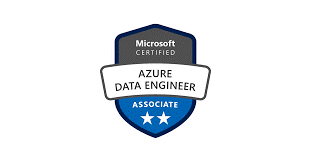Data Engineering on Microsoft Azure Course Overview
Today, everything depends on thorough data analysis to understand the customer pain points and also to identify new opportunities to gain market share. In such a challenging business landscape, it is critical for individuals and enterprises to know how to integrate, transform, and consolidate data across platforms. This Data Engineering on Microsoft to Azure certification (DP-203) is one such certification that helps professionals to build some of the best analytics solutions using Microsoft Azure as a platform. Check out the dates below to enroll for the DP-203 certification training course.
Module 1: Explore compute and storage options for data engineering workloads
- Understand Azure Synapse Analytics
- Describe Azure Databricks
- Describe Azure Databricks Delta Lake architecture
- Understand Azure Data Lake storage
- Work with data streams by using Azure Stream Analytics
Module 2:Run interactive queries using serverless SQL pools
- Explore Azure Synapse serverless SQL pools capabilities
- Query data in the lake using Azure Synapse serverless SQL pools
- Create metadata objects in Azure Synapse serverless SQL pools
- Secure data and manage users in Azure Synapse serverless SQL pools
Module 3: Data Exploration and Transformation in Azure Databricks
- Describe Azure Databricks
- Read and write data in Azure Databricks
- Work with DataFrames in Azure Databricks
- Work with DataFrames advanced methods in Azure Databricks
Module 4: Explore, transform, and load data into the Data Warehouse using Apache Spark
- Understand big data engineering with Apache Spark pools in Azure Synapse Analytics
- Ingest data with Apache Spark notebooks in Azure Synapse Analytics
- Integrate SQL and Apache Spark pools in Azure Synapse Analytics
- Transform data with DataFrames in Apache Spark pools in Azure Synapse Analytics
- Monitor and manage data engineering workloads with Apache Spark pools in Azure Synapse Analytics
Module 5: Ingest and load data into the Data Warehouse
- Use data loading best practices in Azure Synapse Analytics
- Perform Petabyte-scale ingestion with Azure Data Factory or Azure Synapse Pipelines
Module 6: Transform Data with Azure Data Factory or Azure Synapse Pipelines
- Perform Data integration with Azure Data Factory or Azure Synapse Pipelines
- Perform Code-free transformation at scale with Azure Data Factory or Azure Synapse Pipelines
Module 7: Integrate Data from Notebooks with Azure Data Factory or Azure Synapse Pipelines
- Understand how to add an activity to the control flow to orchestrate data from other technologies
- Understand how to use parameters in Azure Data Factory/Synapse pipelines
Module 8: End-to-end security with Azure Synapse Analytics
- Secure a data warehouse
- Configure and manage secrets in Azure Key Vault
- Implement compliance controls for sensitive data
Module 9: Support Hybrid Transactional Analytical Processing (HTAP) with Azure Synapse Link
- At the end of this module, the students will be able to
- Design hybrid transactional and analytical processing using Azure Synapse Analytics
- Configure Azure Synapse Link with Azure Cosmos DB
- Query Azure Cosmos DB with Apache Spark for Azure Synapse Analytics
- Query Azure Cosmos DB with SQL Serverless for Azure Synapse Analytics
Module 10: Real-time Stream Processing with Stream Analytics
- Work with data streams by using Azure Stream Analytics
- Enable reliable messaging for Big Data applications using Azure Event Hubs
- Ingest data streams with Azure Stream Analytics
Module 11: Create a Stream Processing Solution with Event Hubs and Azure Databricks
- Learn the key features and uses of Structured Streaming
- Stream data from a file and write it out to a distributed file system.
- Use sliding windows to aggregate over chunks of data rather than all data
- Apply watermarking to throw away stale old data that you do not have space to keep.
- Connect to Event Hubs read and write streams

